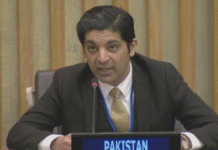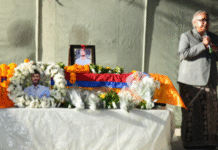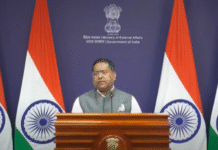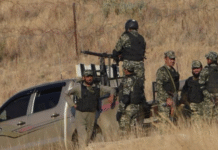New Delhi– Satellite imagery has confirmed that India carried out a series of devastating strikes on terrorist camps and military installations across Pakistan and Pakistan-occupied Kashmir (PoK) under Operation Sindoor, targeting fifteen key extremist sites, including the headquarters of Lashkar-e-Taiba (LeT).
The operation was launched in direct response to the April 22 terrorist attack in Pahalgam, which killed 26 civilians, all of whom were tourists. Indian intelligence attributed the attack to Pakistan-based terror outfits, prompting a swift and precise military retaliation.
Open-source satellite imagery analyzed by intelligence expert Damien Symon revealed extensive damage to multiple terrorist facilities and military airbases in Pakistan. Among the high-value targets hit was Markaz Taiba in Muridke near Lahore—the operational headquarters of LeT, the group behind the 2008 Mumbai attacks. Also destroyed was Markaz Subhan Allah in Bahawalpur, a major training hub for Jaish-e-Mohammed (JeM), and Mehmoona Joya in Sialkot, a base of Hizbul Mujahideen (HM), known for facilitating militant infiltration into Jammu and Kashmir.
Other camps struck during the operation included Sawahi Nallah Camp, Markaz Syedna Bilal, Markaz Abbas Kotli, and Markaz Ahle Hadith, all associated with extremist recruitment and operations.
Over the course of three days, Indian fighter jets executed high-precision airstrikes on nine terrorist hubs deep inside Pakistani territory and PoK, inflicting significant damage. Satellite images from May 10 showed multiple impact zones at the Sargodha Airbase, including substantial damage to runway 14/32. The Rahim Yar Khan Airbase was left inoperable, with a NOTAM (Notice to Airmen) issued through May 17. Additional strikes on Nur Khan, Bholari, and Jacobabad airbases crippled Pakistan’s radar systems, hangars, and other critical operational infrastructure.
According to Indian military officials, these strikes were carried out in response to escalating cross-border provocations, including drone incursions and targeted attacks. The operation triggered intense exchanges of heavy artillery along the Line of Control (LoC), with Pakistan launching retaliatory drone, missile, and artillery strikes—many of which were intercepted by India’s advanced air defense systems.
On May 10, amid rising tensions, Pakistan’s Director General of Military Operations (DGMO) reached out to his Indian counterpart at 3:30 p.m., requesting a ceasefire. India agreed only after completing what officials described as a “calculated and proportionate” military response.
At a joint press briefing, senior Indian defense officials confirmed that approximately 100 terrorists were eliminated in the operation across nine locations. Among them were three high-profile operatives with links to the 1999 Kandahar hijacking and the 2019 Pulwama attack. The panel, consisting of Lieutenant General Rajiv Ghai, Vice Admiral A.N. Pramod, and Air Marshal Awadhesh Kumar Bharti, stressed that India had not violated international borders, and that no Pakistani military incursion into Indian airspace had occurred.
Operation Sindoor also targeted Pakistan’s key military assets, including command structures and airbases in Chaklala, Rafiqui, and Rahim Yar Khan. Radar installations at Pasrur and Sialkot were neutralized, and strategic strikes were conducted on military sites in Rawalpindi, Sukkur, and Sunia using precision-guided munitions.
In addition to the military campaign, Indian intelligence exposed a misinformation effort by Pakistan aimed at distorting the outcome of the strikes. OSINT analyst Damien Symon revealed doctored images being circulated online, including an outdated photo of Jammu Airport falsely portrayed as recent damage caused by Pakistani strikes.
India’s leadership has made it clear that future acts of terrorism will face firm and targeted responses. “Any escalation will be met with fair and punitive retaliation,” said Lt. Gen. Ghai, emphasizing that India’s national security will not be compromised by threats or misinformation. (Source: IANS)













